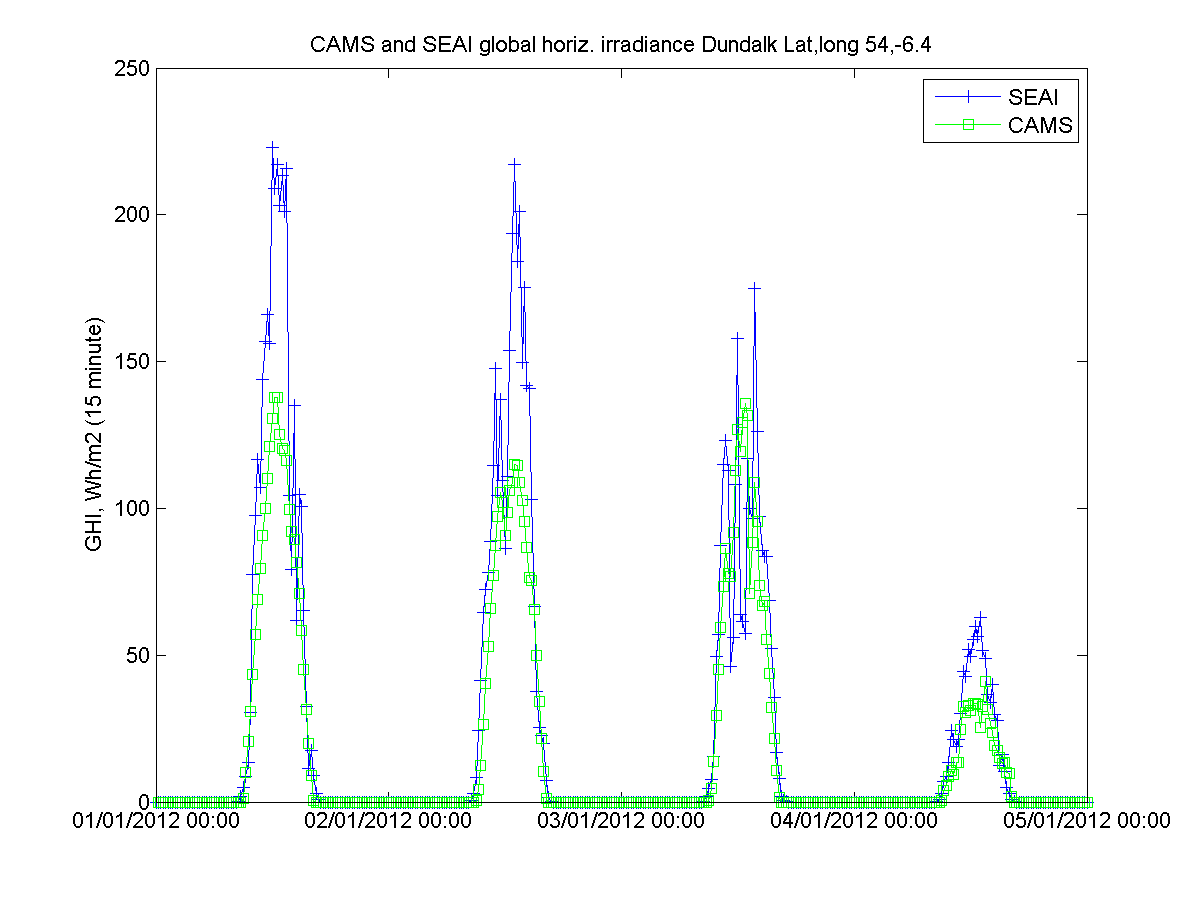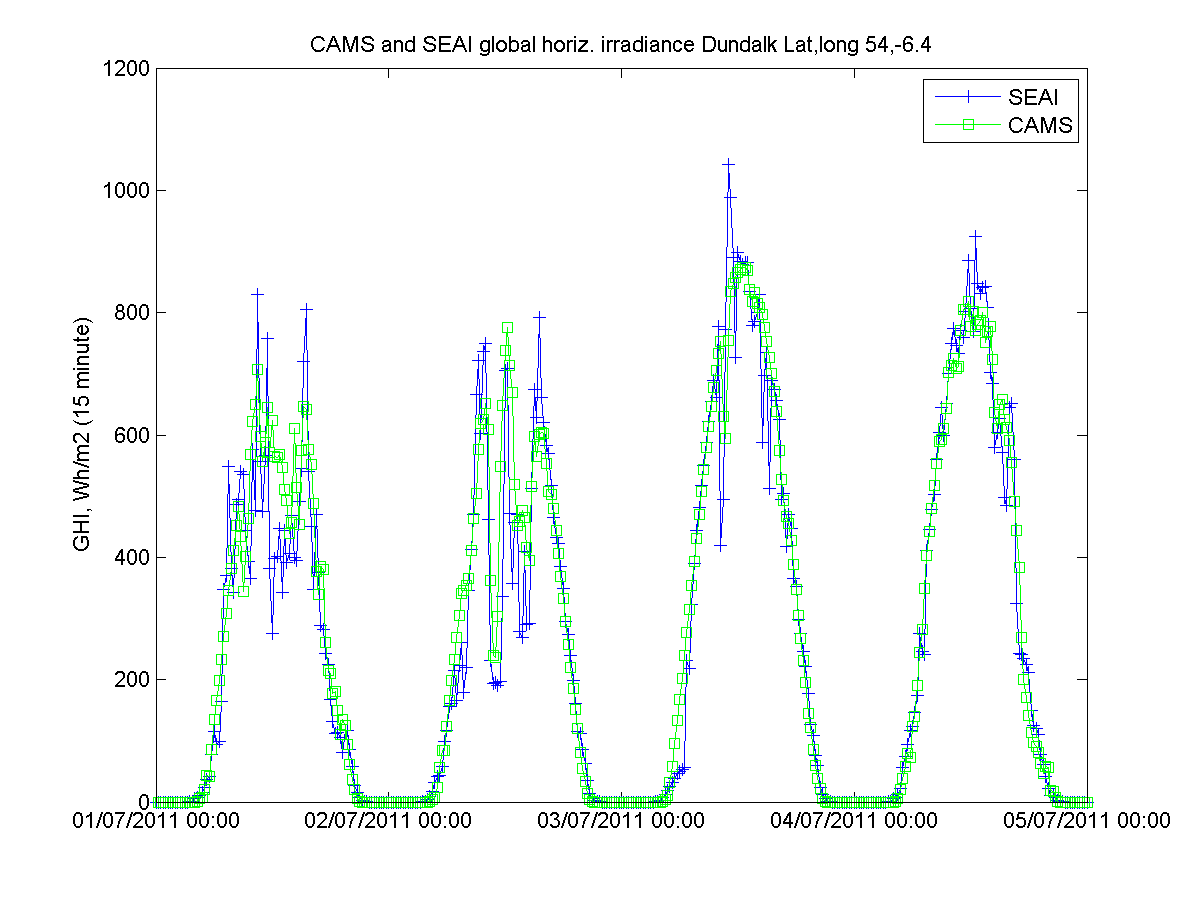Solar irradiance data from CAMS
We are interested in solar irradiance data for simulating PV microgrids. Pierre Haessig at Supélec introduced me to the CAMS solar irradiance dataset generated by the European Centre for Medium Range Weather Forecasting.
Description from the CAMS website:
[CAMS provides] time series of Global, Direct, and Diffuse Irradiations on horizontal surface, and Direct Irradiation on normal plane (DNI) for the actual weather conditions as well as for clear-sky conditions. The geographical coverage is the field-of-view of the Meteosat satellite, roughly speaking Europe, Africa, Atlantic Ocean, Middle East (-66° to 66° in both latitudes and longitudes). The time coverage of data is from 2004-02-01 up to 2 days ago. Data are available with a time step ranging from 1 min to 1 month.
Even better, the data are available free-of-charge, subject to a licence agreement. The underlying spatial resolution is 5km. Preliminary comparisons of 15-minute CAMS global horizontal irradiance with data measured from a solar photovoltaic site under the Sustainable Energy Authority of Ireland's microgrid trial programme (2011-2012) look very promising. Comparisons for the Dundalk test site (54.0 degrees N, 6.4 degrees W) show good agreement in July, and some underprediction in January. The CAMS data even seems to capture some of intra-day temporal variability you can see on the 1st July, typical of Ireland's quite cloudy climate.

Global horizontal irradiance, Dundalk, January 2012, from CAMS and SEAI microgrid PV study.

Global horizontal irradiance, Dundalk, July 2011, from CAMS and SEAI microgrid PV study.
CAMS supply a Matlab script (also a python version) for importing the data into Matlab. This didn't work out of the box for me. It calls several helper functions to reformat dates, and I had to write these myself. These are available on my github repository. The repository also contains a script to import SEAI microgrid data, and the script that generated the plots above.
Electricity and Environment Laboratory
Renewable energy and land-atmosphere interactions research
Contact us
